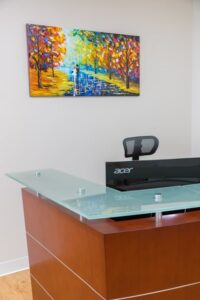No Fees
Unless We Win
Millions Recovered!

Seattle Car Accident Lawyer
A car accident can turn your life upside down in seconds. You may be left with mounting medical bills, uncooperative insurance companies, and the stress of figuring out what comes next. The Seattle car accident attorneys at Boohoff Law are ready to be your personal injury champions. We’ll fight to help you recover maximum compensation for the harm you’ve suffered.
Available 24/7
Our specialists are here to listen and help for free, no strings attached.
877-999-9999
for a free consultation
Seattle Car Accident Guide
-
- What Sets Boohoff Law Seattle Car Accident Attorneys Apart
- Common Causes of Seattle Car Accidents
- Frequently Asked Questions About Seattle Car Accidents
- Common Seattle Car Accident Injuries
- Seattle Car Accident Statistics
- Common Parties With Legal Liability for Seattle Car Accidents
- Common Damages for Car Accident Injuries in Seattle
- Call Boohoff Law’s Seattle Car Accident Lawyers
Car accidents are one of the most common hazards we all face in daily life. From minor fender-benders to catastrophic, multi-car pileups, getting into an accident in a motor vehicle can end a life or change it forever.
At Boohoff Law, one of our principal areas of focus is the representation of Seattle residents and visitors who have suffered injuries in car accidents. If you suffered serious injuries or lost a loved one in an auto accident, you may have the right to recover compensation from those whose actions caused your loss.
Contact an experienced Seattle car accident attorney today – call (877) 999-9999 or fill out a brief online form. We’re available 24/7!
Seattle Legal Services
- Seattle Personal Injury
- Seattle Car Accident
- Seattle Bus Accident
- Seattle Truck Accident
- Seattle Bicycle Accident
- Seattle Burn Injury
- Seattle Motorcycle Accident
- Seattle Drunk Driving
- Seattle Nursing Home Abuse
- Seattle Slip and Fall Accidents
- Seattle Premises Liability
- Seattle Wrongful Death
- Seattle Dangerous Drugs
- Seattle Dog Bite
- Seattle Pedestrian Accident
- Seattle Medical Malpractice
- Seattle Construction Accident
- Seattle Workers’ Compensation
Find out what your Seattle car accident case is worth.
Why Trust the Seattle Car Accident Attorneys At Boohoff Law?
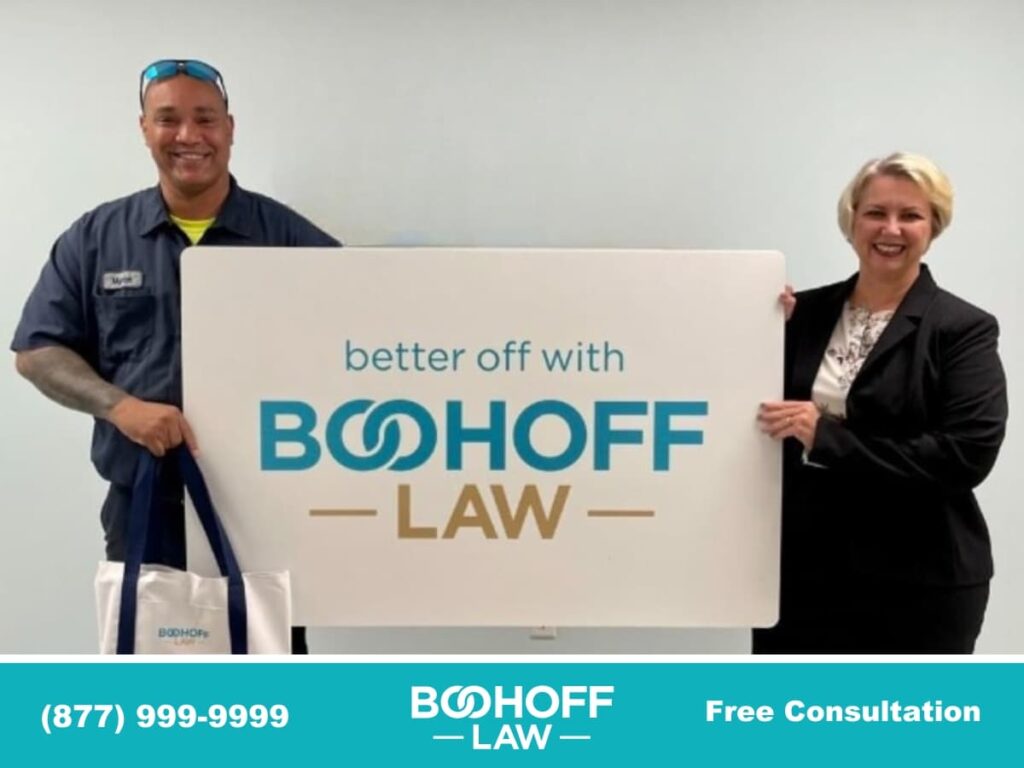

Compassionate, Client-Focused Representation
Attorney Tatiana Boohoff, a Boston University School of Law graduate and the managing partner of Boohoff Law, leads our law firm with a personal commitment to treating every client with care and respect.
Unlike some firms where you might feel like just a number, we take the time to understand your unique circumstances and goals. We’ll stay responsive to your questions and have no problem organizing meetings and consultations at home or from a hospital bed.
Proven Results with a Dedicated Team
Our experience spans years of successfully helping injured individuals recover the compensation they deserve. From serious medical expenses to lost earnings, we advocate for all aspects of your recovery.
We’ve built a reputation for achieving meaningful results that help clients move forward after a serious car crash in Seattle, but we know that every case is different. That’s why we tailor our approach to meet your needs, ensuring you can recover the maximum compensation for your damages and losses.
No Fees Unless We Win
We understand that financial stress is one of the biggest concerns for accident victims. At Boohoff Law, you don’t pay us anything unless we win your case. This no-win, no-fee guarantee allows you to focus entirely on your recovery while we handle the legal battles on your behalf.
Trusted Advocacy When You Need It Most
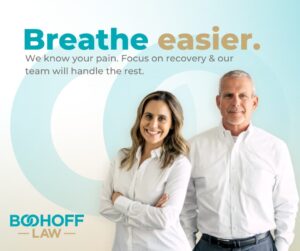
Our firm is built on integrity and a genuine desire to help. Clients often share how comforting and easy we are to work with, thanks to our compassionate approach and clear communication. From the first consultation, you’ll find a team committed to listening to your story, explaining your legal options, and fighting to ensure you’re treated fairly.
Contact us today to schedule your free consultation and take the first step toward rebuilding your life. We’re ready to help 24/7.
Seattle Car Accident Statistics
Car accidents are among the most common types of personal injury cases, and their impact can be life-changing. For many victims, the aftermath of a crash brings not only physical pain but also emotional and financial stress. It’s easy to feel isolated and overwhelmed as medical bills pile up, wages are lost, and uncertainty takes hold. Sadly, these challenges are all too common for injured drivers and passengers, with recent car accident statistics showing:
-
Seattle experiences thousands of car accidents annually, disrupting countless lives.
-
Hundreds of victims suffer severe, life-changing injuries, with a significant number facing permanent disabilities.
-
A troubling portion of these accidents result in loss of life, leaving families devastated.
-
Common causes include reckless driving, speeding, and failure to follow traffic laws, emphasizing the preventable nature of many crashes.
One alarming statistic that often goes unmentioned is that 40% of victims lose their right to fair compensation because they miss deadlines or aren’t aware of the legal processes required to protect their claims. Even more concerning is that when victims negotiate on their own, average settlements often fall far short of covering their medical bills, lost wages, and other damages.
The truth is that insurance companies are not on your side. Their goal is to minimize payouts, often pressuring victims into quick settlements that don’t reflect the recovery cost. Without experienced legal guidance, many victims unknowingly leave significant compensation on the table.
At Boohoff Law, we’re here to ensure you don’t become a car accident statistic when recovering the compensation you deserve after someone else’s negligence causes you harm. Schedule a free case evaluation with our personal injury law firm today to learn how we can help you fight for justice.
What Types of Negligence Qualify For Compensation?
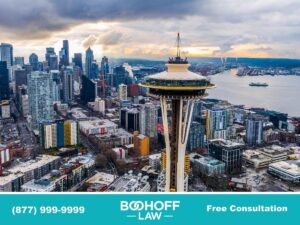 Many Seattle motor vehicle accidents happen because drivers fail to make responsible decisions or disregard safety laws. When this type of negligence occurs, the at-fault driver or entity may be responsible for your financial damages, especially if any of the following factors were involved:
Many Seattle motor vehicle accidents happen because drivers fail to make responsible decisions or disregard safety laws. When this type of negligence occurs, the at-fault driver or entity may be responsible for your financial damages, especially if any of the following factors were involved:
-
Impaired or drunk driving. Operating a motor vehicle under the influence of drugs or alcohol not only raises the likelihood of collisions but also results in devastating accident injuries. Nearly half of Washington’s fatal traffic accidents involve impaired drivers. Victims of these accidents deserve justice for the reckless choices that put them in harm’s way.
-
Distracted driving. Drivers who fail to pay attention to the road often trigger life-changing accidents. Distractions like texting, eating, or adjusting vehicle controls create dangerous situations in seconds. These accidents are frequently entirely preventable, and drivers who engage in such risky behavior can be held accountable for the harm they cause.
-
Speeding. Excessive speed remains one of the leading causes of severe collisions. These accidents often happen when drivers recklessly ignore speed limits, putting everyone on the road at greater risk. Speeding increases the severity of crashes, leaving victims with more serious injuries and mounting medical bills that a Seattle car accident lawyer can help recover compensation for.
-
Driver fatigue. Driving while fatigued is another form of negligence with effects similar to impaired driving. Exhausted drivers may fail to react to road conditions or hazards, leading to catastrophic outcomes. Victims impacted by these accidents need someone to hold the responsible parties accountable.
-
Road conditions and vehicle malfunctions. While drivers are responsible for adjusting to conditions, some crashes result from defective vehicles or poorly maintained infrastructure. A Seattle personal injury lawyer from Boohoff Law can help explore all liable entities and ensure they are held accountable for negligent maintenance or defective auto parts.
When serious accidents happen due to another person’s negligence, it’s not just unfortunate; it’s unacceptable. At Boohoff Law, we understand the challenges car accident victims face.
Our experienced Seattle car accident attorneys know how to analyze the unique facts of your case, demonstrate fault, and fight for the compensation you deserve. If a negligent driver caused your injuries, hold them accountable with award-winning Seattle car accident lawyers.
Does It Matter Where My Car Accident Occurred in Seattle?
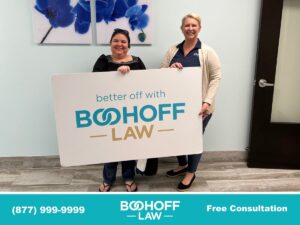
Seattle’s roads are home to high-risk areas where preventable accidents frequently occur, leaving victims with serious injuries and financial hardships. Negligent actions like distracted driving, speeding, and driver unfamiliarity are common at these dangerous intersections, putting countless lives at risk:
-
James Street and Sixth Avenue: This area is known as a crash hotspot near Harborview Medical Center. Negligence, such as distracted driving or failing to yield, often leads to collisions.
-
Boren Avenue and Pike Street: With heavy pedestrian traffic near the Washington State Convention Center, this area often sees accidents caused by drivers who are not paying attention or unfamiliar with their surroundings.
-
Lake City Way NE and NE 103rd Street: Located along a busy roadway in northeast Seattle, intersections like this see frequent crashes linked to speeding and distracted driving.
-
Dexter Avenue North and Thomas Street: This intersection is in the heart of downtown, near tourist attractions like the Space Needle. It is a scene of accidents involving distracted drivers, cyclists, and pedestrians.
Intersections aren’t the only places where accidents happen. Neighborhoods with high traffic volumes or unique risks include:
-
Capitol Hill and Belltown: Known for their nightlife and crowds, these areas often see crashes due to impaired or aggressive driving.
-
Seattle-Tacoma International Airport: Heavy traffic and distracted drivers contribute to frequent collisions near the airport.
-
University of Washington and Seattle University: Student communities often face higher risks, especially involving inexperienced drivers.
Whether at a notorious intersection or elsewhere in the city, accidents caused by negligence can leave victims facing overwhelming challenges. When someone else’s carelessness leads to injury, it’s not just an unfortunate event; it’s a violation of your rights as a victim. If you’ve been injured in an accident anywhere in Seattle, contact Boohoff Law for a free consultation.
What Car Accident Injuries Can I Seek Compensation For?
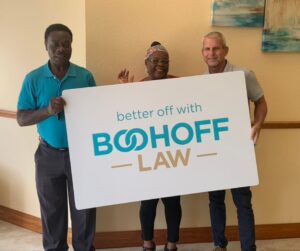
Car accidents in Seattle can leave victims with severe, catastrophic, or fatal injuries that may qualify for compensation, including but not limited to:
-
Whiplash: Often caused by rear-end collisions, whiplash occurs when the neck is jolted back and forth rapidly. Victims may feel fine initially, only to experience neck pain, stiffness, and headaches days later. Left untreated, complications like chronic pain can result, adding to long-term medical expenses.
-
Traumatic brain injuries (TBI): High-impact crashes at dangerous intersections or sudden collisions on Seattle’s busy highways can cause TBIs, ranging from mild concussions to devastating brain damage. These injuries might not show symptoms immediately, but they can lead to memory loss, mood swings, and cognitive challenges that require extensive and costly rehabilitation.
-
Broken bones: Fractures frequently occur in T-bone or high-speed collisions, especially when cyclists or pedestrians are involved. Whether it’s a simple arm fracture or a complex pelvic injury requiring surgery, broken bones often bring unexpected medical bills and long recovery times.
-
Soft tissue injuries. Sprains and torn ligaments are common in side-impact crashes or when vehicles stop suddenly. Victims might dismiss them initially but later face ongoing pain and the need for physical therapy. These expenses can pile up quickly without proper compensation.
-
Spinal cord injuries. Rollovers or head-on collisions often result in spinal damage, leading to partial or complete paralysis. These life-altering injuries can leave victims needing lifelong care, modifications to their homes, or assistive devices that could cost millions over a lifetime.
-
Cuts and lacerations. When debris, broken glass, or car parts cause cuts or deep wounds, auto accident victims can face not only immediate medical costs for stitches or blood loss but also ongoing expenses if surgical intervention or scar revision is required.
-
Internal injuries: High-impact accidents on highways or collisions with larger vehicles can damage internal organs or cause internal bleeding. These injuries might be complex to detect right after the crash but can become life-threatening without prompt medical care. The costs of emergency surgeries, hospital stays, and ongoing treatments can quickly escalate to hundreds or millions of dollars in upfront and lifetime costs.
-
Psychological trauma: The emotional scars of a car accident are just as real as physical ones. Victims who suffer post-traumatic stress disorder (PTSD), anxiety, or depression after a collision may need costly mental health services. This is especially true after catastrophic collisions and fatal car accidents.
Many injuries don’t show immediate symptoms, and their full impact—including the cost of treatment for months or even years—is often underestimated. When negligence causes these injuries, victims have a right to pursue compensation that will cover not just current medical bills but also lifetime expenses, lost wages, and emotional damages.
At Boohoff Law, we fight for Seattle car accident victims, helping them hold negligent parties accountable and secure the resources needed for their financial recovery. Contact us today for a free consultation to discuss your personal injury claim.
What Compensation is Available In Car Accident Cases?
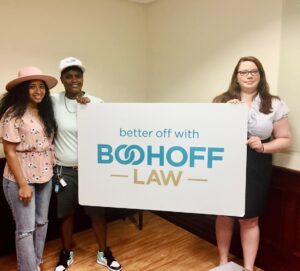
A car accident can leave you with many unexpected expenses and losses. Our team can help you secure compensation for a wide range of damages, including but not limited to:
-
Medical expenses: From emergency care and surgeries to ongoing treatments such as physical therapy or medications, we’ll help ensure that the compensation covers your current and future medical needs.
-
Lost wages and earning capacity: If your injuries force you to miss work or limit your ability to earn in the future, you shouldn’t have to shoulder the financial hit. We’ll work to recover the income lost today and safeguard your financial future.
-
Pain and suffering: Accidents take a toll beyond physical injuries. Severe pain, mental anguish, and reduced quality of life deserve meaningful compensation to help you cope.
-
Disability or disfigurement: Life-altering injuries like paralysis or permanent scarring demand accountability. You may be entitled to additional compensation to address these life-changing impacts.
-
Property damage: Whether you need to repair your vehicle or replace personal items damaged in the crash, these costs shouldn’t be out of your pocket.
-
Loss of enjoyment of life: If your injuries prevent you from participating in hobbies or activities you once loved, we’ll fight for compensation that acknowledges this loss.
-
Wrongful death damages: For families who’ve lost a loved one, compensation may cover funeral expenses, loss of financial support, and the profound emotional toll of the tragedy.
No two car accident claims are alike, and several factors can affect the outcome of your case and the amount of compensation you may receive, including but not limited to:
-
Insurance Policy limits: The other driver’s policy coverage can limit the compensation you may recover. We’ll explore additional avenues to maximize your claim, such as uninsured/underinsured motorist coverage.
-
Severity and scope of your injuries: More serious injuries often lead to higher compensation, especially if they result in long-term limitations or require ongoing care. By thoroughly documenting your injuries, we’ll ensure that all costs—including future needs like therapy or surgeries—are accounted for.
-
Economic and non-economic damages: Lost wages, medical expenses, and property damage are easy to calculate, but non-economic impacts like emotional distress and loss of enjoyment require skilled representation to evaluate and prove.
-
Shared fault: If the opposing party claims you share some blame for the accident, it could reduce your compensation. Our attorneys will work hard to disprove unfounded allegations and show who bears responsibility.
Insurance companies often aim to minimize your claim or deny liability, but Boohoff Law isn’t here to settle for unfair offers. Whether through settlement negotiations or court litigation, our Seattle car accident lawyers are relentless in the pursuit of justice for the city’s personal injury victims.
How Can A Seattle Car Accident Lawyer Help My Case?
Managing the aftermath of a car accident can be overwhelming, especially when you’re dealing with injuries, financial stress, and complicated insurance claims. An experienced car accident lawyer in Seattle can help you navigate the potential obstacles and challenges that get in the way of recovering fair compensation, including but not limited to:
-
Insurance claim denials. Yours or the other driver’s insurance company may deny claims or try to minimize payouts, even when fault has been demonstrated with substantial evidence. Our Seattle personal injury lawyers can help combat these tactics and fight for the compensation you deserve.
-
Meeting filing deadlines. Washington State’s limitations statutes may allow you up to three years to file a claim for motor vehicle accidents. However, many factors determine the filing deadline, and you may not always have as much time as you think to recover compensation. Our attorneys can help you understand how the statute of limitations applies to your case and help meet critical filing deadlines to keep your claim on track.
-
Gathering and strengthening evidence: Many claims fall flat due to insufficient evidence. A Seattle car accident lawyer from Boohoff Law analyzes accident evidence accordingly and helps gather what’s needed to build a strong compensation case.
-
Handling communication with all parties. Insurance companies and opposing legal teams can pressure you into saying something that may weaken your claim. Our Seattle car accident lawyers can handle all communication on your behalf, ensuring you don’t unintentionally harm your case.
-
Addressing complexities of fault and liability: If there’s a dispute over who caused the accident, our car crash lawyers in Seattle can use evidence and expert witnesses to help demonstrate where fault lies to help minimize your liability and maximize the compensation you recover.
Having experienced representation can make the difference between a minimal settlement and the compensation you truly need. Find out how a Seattle car accident attorney from Boohoff Law can be your champion in the fight for justice during a free personal injury case evaluation.
What Should I Do After A Car Accident?
Many of the critical steps to protect your rights happen after the initial scene of the accident. By staying proactive and contacting a lawyer, you can strengthen a case as you work toward receiving fair compensation when you:
-
Avoid posting on social media. Insurance companies may search your social media accounts for posts that contradict your claims. Avoid posting about the accident, your injuries, or anything that could be taken out of context.
-
Keep a detailed record: Document your pain levels, medical appointments, and how the accident has affected your daily life. This record can serve as powerful evidence if your case goes to court.
-
Stay in contact with your doctor: Even if your initial injuries seem minor, follow up on recommended treatments and seek additional care. Delayed symptoms, such as those from whiplash or traumatic brain injuries, may not appear immediately.
-
Notify your insurance company: Your policy often requires timely notification. File your claim as soon as possible, being careful not to provide statements that could be misunderstood or misused. Speak with our car accident lawyers in Seattle if you need support with this vital step.
Your lawyer will work to do the heavy legal lifting at every turn of your case. But by keeping these steps in mind, you can do what you can to support your claim for maximum compensation.
Seattle Motor Vehicle Accidents FAQs
Should I accept the first settlement offer from the insurance company?

It’s natural to feel relieved when a settlement offer arrives quickly after a car accident. However, initial offers are often designed to save the insurance company money. They may not fully cover your medical bills, lost wages, or other damages. Evaluating the offer carefully and understanding what you’re entitled to can help you avoid accepting less than you deserve. Seeking professional advice can ensure that you make an informed decision.
Do I need to provide a statement to the insurance company?
You might feel obligated to cooperate with the insurance company and provide a statement quickly. While it’s usually required, be cautious about what you say. Even innocent comments can be taken out of context to minimize your claim. Preparing your statement thoughtfully, preferably with legal guidance, can help protect your interests.
How long do I have to file a claim?
Three years may sound like a long time to file a claim, but the earlier you act, the better. Evidence fades, witnesses might become more challenging to locate, and delays can weaken your case. Moving forward promptly provides a significant advantage when seeking compensation.
How much does hiring a Seattle car accident lawyer cost?
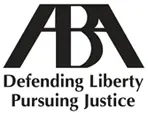
The idea of legal fees can feel overwhelming, especially after an accident. However, most Seattle car accident lawyers, including those at Boohoff Law, offer services on a contingency basis. This means you won’t pay any upfront fees; your lawyer only gets paid if they recovers your compensation. This structure ensures you can pursue justice without additional financial stress.
What happens if I share some fault for the accident?
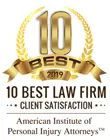
It’s easy to worry that you may have contributed to the accident. Washington follows a comparative fault system, meaning your compensation could be reduced by your percentage of responsibility. Even so, you shouldn’t assume blame without understanding how the law applies to your case. It still may be possible to recover substantial compensation, depending on the circumstances and evidence.
How Much is My Seattle Car Accident Claim Worth?
After a car accident, one of the most pressing concerns is: How much is my case worth? The answer depends on the specifics of your injuries and losses. At Boohoff Law, we’re committed to helping you secure compensation for every aspect of your recovery.
-
Medical Expenses: From ER visits and surgeries to physical therapy and long-term care, medical bills can pile up quickly. We work to recover compensation that comprehensively addresses your current and future medical needs.
-
Lost Wages: If your injuries prevent you from working temporarily or permanently, you deserve compensation for your lost income. That includes sick days, PTO, and future earning potential.
-
Pain and Suffering: Physical injuries are only part of the story. Accidents can cause emotional distress, mental anguish, and diminished quality of life. Washington law allows you to seek damages for this invisible—but very real—pain.
Every case is unique. Our Seattle car accident attorneys will evaluate the full scope of your damages to fight for the compensation you rightfully deserve.
Is Washington a No-Fault Insurance State?
No. Washington is not a no-fault state. That means if you’re injured in a car accident, the party responsible for causing the crash is also responsible for your damages.
Washington follows a comparative fault system, which means if you’re found partially at fault, your compensation can be reduced by your percentage of fault.
Insurance companies use this rule to reduce their payouts. That’s why it’s critical to have a skilled car accident lawyer who can challenge blame-shifting tactics and fight for your full compensation.
What Happens If the Driver Who Hit Me Was Uninsured?
Getting hit by an uninsured driver can be incredibly frustrating. But you still have options.
In Washington, uninsured motorist coverage (UM/UIM) is optional but strongly recommended. If you carry this coverage, you can file a claim with your own insurance provider to help cover your medical bills, lost wages, and other losses.
Even if the at-fault driver has no coverage, our experienced car accident lawyers at Boohoff Law can help explore alternative options, such as your UM policy or holding other liable parties accountable.
What is an Uninsured Driver?
An uninsured driver is someone operating a vehicle without legally required auto insurance. Unfortunately, Washington ranks among the top states for uninsured drivers, with over 1 in 5 motorists lacking coverage.
If you’re hit by an uninsured driver, you’ll likely need to file a claim through your own insurance. Washington law requires insurers to offer UM/UIM coverage, but policyholders can reject it in writing. If you have this coverage, we’ll help you use it.
Don’t let a negligent driver’s lack of coverage jeopardize your future. Let us help you hold them accountable.
What Should I Know About Multi-Car Accidents?
Multi-car accidents or pileups can quickly become chaotic. These accidents often occur on high-speed roads and involve several vehicles, making it difficult to determine who is at fault.
Under Washington’s comparative negligence laws, more than one driver can be held liable. That means even if you’re partially at fault, you can still recover compensation proportionate to the other driver’s fault.
Our legal team investigates the complete sequence of events by:
-
Analyzing police reports and accident reconstructions
-
Reviewing traffic or dashcam footage
-
Interviewing eyewitnesses
-
Working with expert witnesses
What to Do After a Car Accident in Seattle?
-
Call 911 – Always report the accident. Medical help and official reports are crucial.
-
Request a Police Report – This will be necessary evidence for your claim.
-
Don’t Admit Fault – An apology can even be used against you. Stick to the facts.
-
Exchange Information – Get the other driver’s insurance, contact details, and witness info.
-
Notify Your Insurance Company – Let them know a crash occurred, but avoid giving recorded statements without legal guidance.
-
Seek Medical Attention – Some injuries don’t immediately appear, even if you feel fine. Get checked out.
-
Contact a Car Accident Attorney – Hiring a car accident lawyer early gives you the strongest chance at fair compensation. Our Seattle personal injury attorneys handle the evidence, the insurers, and the legal deadlines so you can focus on healing.
Boohoff Law | Experienced Seattle Car Accident Lawyers Ready To Fight For Your Rights

Recovering from an auto accident can feel like an uphill battle. Without legal support, victims may find themselves struggling to deal with uncooperative insurance companies, mounting medical bills, and complex legal processes. Many are left unsure of how to protect their rights or secure the full compensation they deserve, compounding the emotional and financial toll of the crash.
At Boohoff Law, our experienced Seattle car accident attorneys are passionate about helping car wreck victims rebuild their lives. Whether navigating insurance disputes, gathering critical evidence, or advocating for your rights in court, our team is dedicated to tackling your case’s unique challenges.
Don’t face these challenges alone. Contact Seattle personal injury attorneys from Boohoff Law online or at (877) 999-9999 for a free consultation and take the first step toward reclaiming what you’ve lost.

Boohoff Law Seattle Office
920 5th Ave, Suite 1530, Seattle, WA 98104
Free Consultation
We Are Here For You 24/7
Client Testimonial
“From the moment I contacted Boohoff Law on the day of my accident, I felt as though I was being assisted by professionals who not only excelled in their field, but also, genuinely cared about the people they served. Staff appeared enthusiastic with every contact we had over the time it took to resolve my case. I also never felt manipulated nor condescended to when asking questions about my case. I felt supported in my goals to be forthright and honest about my condition. Simply, this law firm appears to be run by a kind, competent, and friendly staff. I am completely satisfied with the service I received. Although I hope to never need their help again due to being injured in an accident that was not my fault, I feel secure in the knowledge that I have them in my corner should I ever find myself in such unfortunate circumstances again.” – David T.
Review: 5/5 ★ ★ ★ ★ ★
Boohoff Law P.A.
Seattle Location
920 5th Ave,
Suite 1530,
Seattle, WA 98104
(877) 999-9999
Recovery is personal.
We’re here for you.
We’re close by. And if you can’t make it to us, we’ll meet you where you need us, at home or in the hospital.
You're better off with Boohoff.
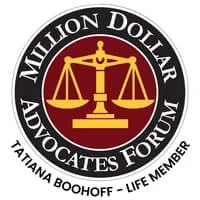

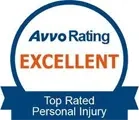
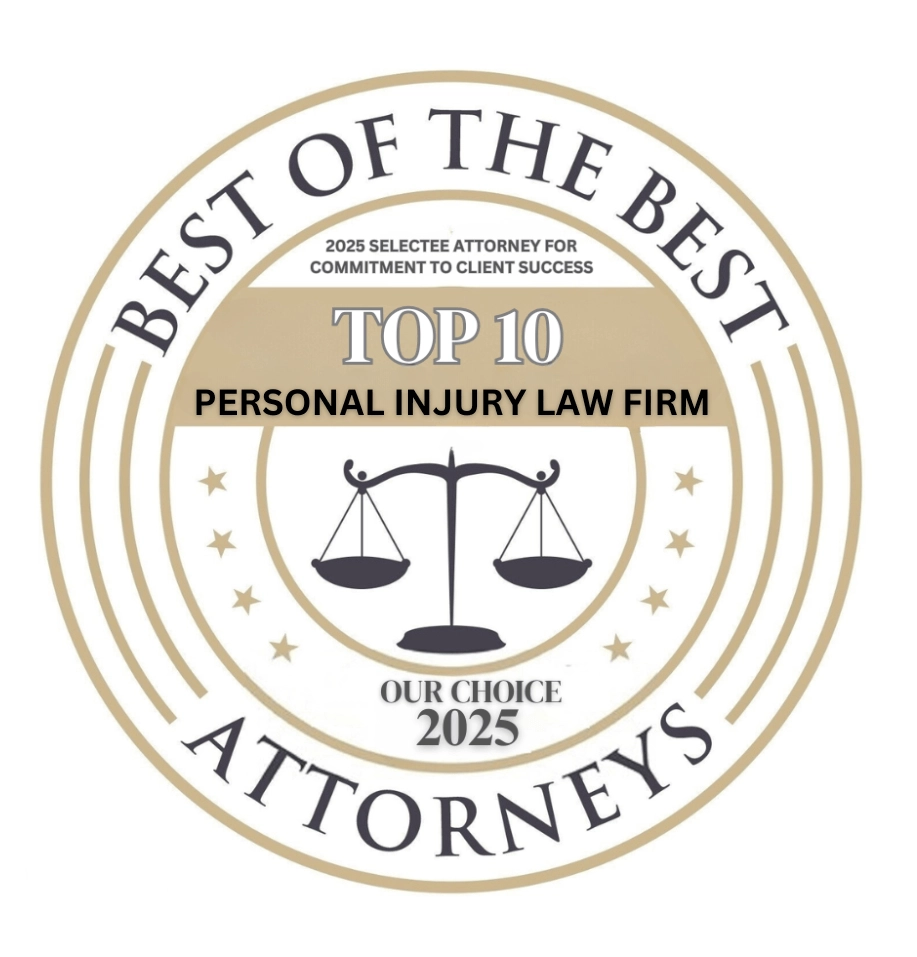
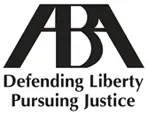
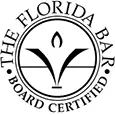
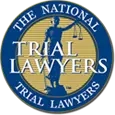



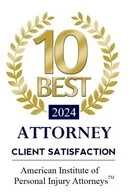
The information on this website is for general information purposes only. Nothing on this site should be taken as legal advice for any individual case or situation. This information is not intended to create, and receipt or viewing does not constitute, an attorney-client relationship.
available 24/7
(877) 999-9999
